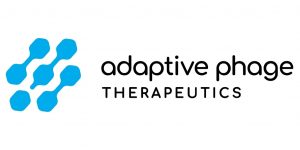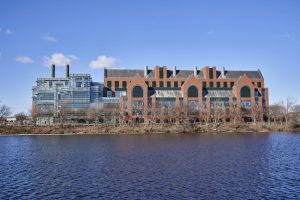
Despite Rocky Biotech Bear Market, the BioHealth Capital Region Holds Fast and Forges Ahead
At the recent 2022 BioHealth Capital Region Forum, thought leaders discussed the current state of the BioHealth Capital Region market, how the market positions against other biohubs in various criteria, and what’s needed to continue its upward trajectory.
The seas have been rough this year for the biotech and life sciences market, with funding scarcity and layoffs abound. The BioHealth Capital Region (BHCR) has braced the storm, though, holding tight to its fourth-place ranking on the Genetic & Engineering News (GEN) Top 10 Biopharma Clusters list. Alex Philippidis, Senior Business Editor for GEN, gave the update at the eighth annual BioHealth Capital Region Forum.
The BioHealth Capital Region is positioned to become a top three biopharmaceutical hub in the United States within a year based on the strengths of existing science, economic incentives, and real estate costs.
“The right fundamentals are in place as well as the right structure. When those two aspects come together it increases the probability of growth,” explained Pete Briskman, Executive Managing Director and Co-Lead for JLL’s Mid-Atlantic Life Sciences Practice.
Still, Briskman noted that one thing could trip up the region’s ascension to a top three spot – training needs for skilled manufacturing employees. Briskman said the BHCR leads the nation in PhDs per capita but there is an increasing need for those key employees who can provide those key, supportive roles companies need to grow and thrive. Briskman said training will become a key asset for both companies and university programs.
The BHCR flexed its strengths in the number of patents held by key players within the region as well as in the amount of lab space, ranking third in both categories. The region ranked fourth in the number of jobs and in funding from the National Institutes of Health and came in seventh for the amount of venture capital funding over the past year.
Philippidis pointed to trends that could benefit the BHCR and initiate its move up the ladder of clusters of importance. The increasing inflation rates could cause some companies to explore new areas where real estate is not as costly per square foot. Inflation will also impact financing. He anticipates smaller financing rounds, particularly for smaller companies. Late-stage companies may continue to see double- and triple-digit late-stage financing rounds. Additionally, a still sluggish market will also slow down expansions of business.
Briskman agreed, He noted that across the BHCR rent has doubled over the past five years. However, when compared to the other top clusters across the country, he said the prices in Maryland, Virginia, and Washington, D.C. “are still at a major discount.” The per-square-foot price for space in the region comes in a $35.29, while in the Boston area, the price is about $95 per square foot.
RELATED: Virginia’s Pocket Life Science Ecosystems are Booming
Over the past several years companies have made significant real estate investments across the region. For example, in June, Horizon Therapeutics announced it was quadrupling its space in Maryland with a new state-of-the-art facility in Rockville. The 192,000 square foot space is expected to be completed in 2024.

2021 was what Briskman called a “fabulous year,” with 68% growth in venture capital funding across the region. In 2021 there was $1.63 billion in VC funding invested in the region. So far in 2022, there has been $571 million invested by VCs. NIH funding across the BHCR was $3.2 billion in 2021. Year to date for 2022, the tally is $1.6 billion, which Briskman said is “right on par with 2018, 2019, and 2020.”
Although initial public offerings have slowed across the country in 2022, Briskman said there has been a “disproportionate amount” in the region. Earlier this year, Gaithersburg-based Arcellx, Inc. raised $123.8 million in its IPO. Then, in June, the company raised an additional $128.8 million in a second public offering. Shuttle Pharmaceuticals, based in Rockville, raised about $10 million in its August IPO.
RELATED: Life Science Development Projects Position Baltimore BioMed Ecosystem for Boom
“M&A also remains active. That shows the region is becoming more mature,” Briskman said.
He pointed to Personal Genome Diagnostics, which raised $103 million in financing last year, and was acquired earlier this year by Laboratory Corporation of America for $575 million. Also, GeneDx was acquired by Sema4 in May for $623 million.
When all of these aspects are taken together, Briskman said the BHCR touches on all of the aspects Philippidis uses to measure how each biopharmaceutical cluster ranks.
Looking back over the years, Rich Bendis, Founder and Chief Executive Officer of BioHealth Innovation, expressed his excitement about the continued growth of the region. When the BHCR was first making its mark, Bendis said people first had the notion that the innovation was only occurring along the I-270 corridor. With continued growth in hubs such as Baltimore, Frederick, Charlottesville, and Richmond, that is no longer the case.
“This has truly become regional,” he said.




